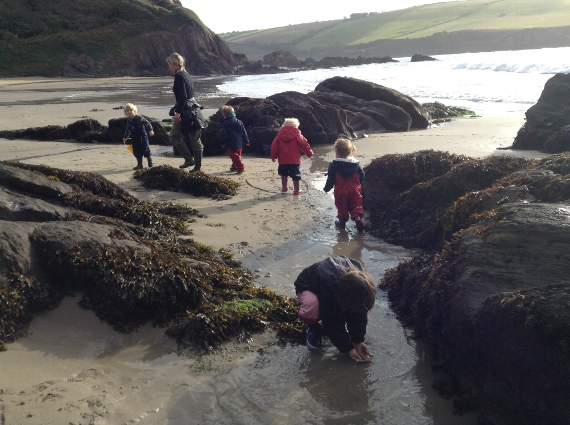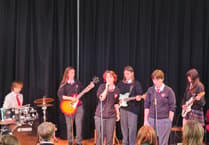YOUNGSTERS in Holbeton will continue to have access to Mothecombe beach for valuable outdoor lessons this winter while the path to it is repaired.
Instead of walking down the narrow path to the beach, preschool and primary children will be scampering through the orchard and woodland gardens at Mothecombe House by invitation of Anne Mildmay-White.
They will also be able to use a small building on the beach to dry out and warm up afterwards.
The owner of the Flete Estate is a keen advocate of Holbeton Primary and Preschool’s beach and forest schools, where youngsters get out and about as part of their studies.
She said: ’When I realised how difficult the public path to the beach is becoming for mums with pushchairs to use, I decided to intervene.
’The Flete Estate will be carrying out improvements to the public path through the winter, and in the meantime the Holbeton Preschool children and mums are welcome to walk through the garden to beach school.
’I have also invited them to use the little teahouse on the beach as a place to warm the children and give them their hot chocolate in front of the fire.
’I am very keen to promote Holbeton preschool and primary school’s access to both beach school and forest school on the Flete Estate, as I am so impressed by the value of outdoor learning for children. It’s easy to take our wonderful surroundings for granted, but only a tiny number of schools have the regular access to forest and beach schools that Holbeton children enjoy.’
Anne is also a fount of knowledge on the history of the estate. She said the little beach teahouse nestled in the western edge of the beach was originally a lime kiln, built for burning limestone which was brought in by boat.
The resulting powdered lime was added to the fields to balance the acidity of the soil and improve the growth of grass and crops.
In the 1870’s Henry Mildmay added the little building with windows and two fireplaces, to make two separate changing rooms for the ladies and gentlemen when they came to bathe in the salt water. He built in a seawater swimming pool, the remains of which are visible as broken walls beyond the teahouse, reputedly blown up by the Home Guard at the end of the war.
Anne added: ’Since 1950, generations of children have warmed up in front of the fire and dried out their clothes following the inevitable soaking they receive when paddling in winter. This year a new crop of children will enjoy its cosy welcome.’





Comments
This article has no comments yet. Be the first to leave a comment.